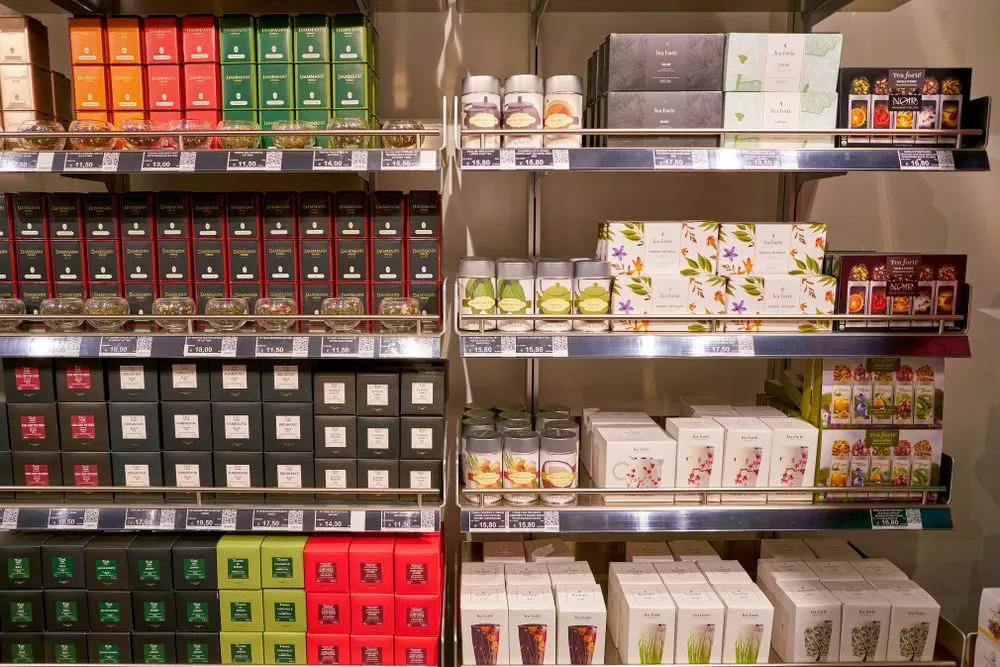Folding Carton vs. Corrugated Box vs. Rigid Box: A Comparison
Packaging is an unspoken brand ambassador and advertisement. Apart from its primary purpose of product protection for distribution, sale, and use, product packaging is the first touchpoint with consumers, making it an essential aspect of a brand’s identity.
As businesses experiment with different packaging solutions, the choice of packaging material becomes pivotal. Each type boasts unique advantages and considerations, significantly influencing both practical functionality and design aesthetics.
Three of the most common packaging types are folding cartons, corrugated boxes, and rigid boxes. This article compares these three to empower businesses to discern the most fitting packaging option for their goods.
Jump to a Section
- What is Folding Carton Packaging?
- Advantages and Disadvantages of Folding Cartons
- What Are Corrugated Boxes?
- Advantages and Disadvantages of Corrugated Boxes
- What are Rigid Boxes?
- Advantages and Disadvantages of Rigid Boxes
- Summary: Folding Cartons vs. Corrugated Boxes vs. Rigid Boxes
What is Folding Carton Packaging?
Folding carton packaging is a versatile and lightweight solution typically made from paperboard. It’s a flat construction that folds into shape when needed, allowing for easy storage and customization. The retail, cosmetics, and food industries often use folding cartons as a cost-effective and visually appealing choice.

Advantages and Disadvantages of Folding Cartons
Here are the features of folding carton boxes based on four criteria.
| Structural Integrity | Printing Capabilities | Cost-Effectiveness | Environmental Impact |
| – lightweight and versatile – limitations in heavy or bulky items | – high-quality graphics – constraints on special finishes | – economical for large production runs – considerations for small batches | – recyclability and sustainability – use of different materials (e.g. paperboard) |
Structural integrity
Folding cartons strike a balance between versatility and durability. They provide adequate protection for a wide range of products of varying shapes and sizes. However, they can struggle with particularly heavy or bulky items due to their lightweight design.
Printing capabilities
Folding cartons boast impressive printing capabilities, allowing for high-quality graphics that enhance product visibility and brand recognition. The smooth surface of typical materials such as paperboard is excellent for vibrant and detailed imagery.
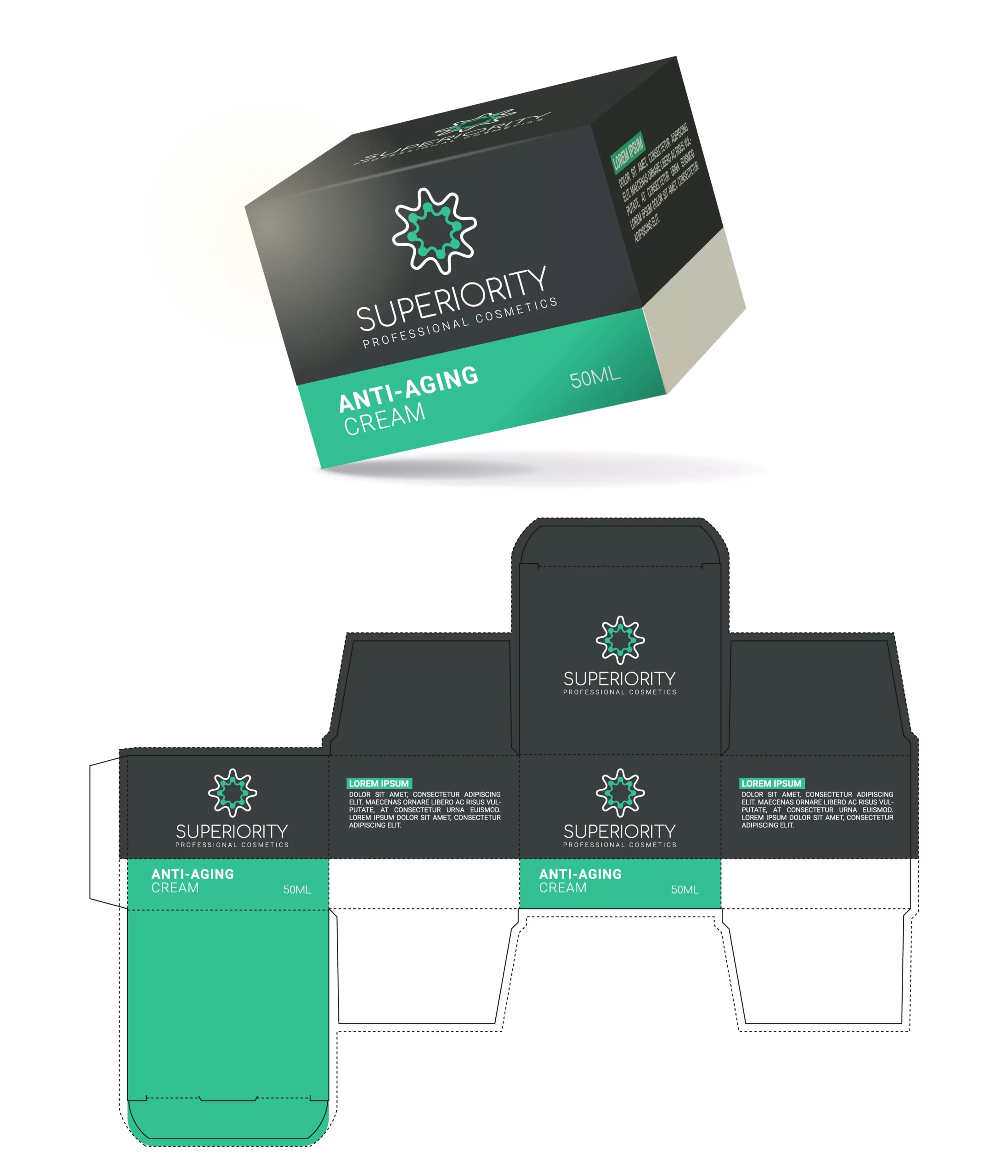
Furthermore, folding cartons offer the most easily available options for finishing and embellishments to create visual appeal, creating many opportunities to represent your brand well and stand out from the competition.
However, while one can get creative with folding carton embellishments, there are constraints regarding finishes. The foldable nature of the carton may limit options for intricate embellishments, requiring careful consideration of the desired visual effects during the design process.
Cost-effectiveness
Folding cartons stand out for their cost-effectiveness, particularly in large production runs. Additionally, they tend to have the shortest lead times compared to the other two packaging types, assuming the same print methodology and production technologies.
The efficiency of the manufacturing process, combined with the use of economical materials, makes folding cartons a budget-friendly choice for mass production. Note that small batches can raise considerations as the initial setup costs may be less economical on a per-unit basis.
Environmental impact
Sustainable folding cartons often come in readily recyclable materials, aligning with eco-friendly practices. Some cartons incorporate recycled content or originate from sustainable sources, further reducing their virgin resource use.
What Are Corrugated Boxes?
Corrugated boxes are a robust packaging solution with a layered structure. They include a fluted inner sheet between two sturdy outer sheets. Known for their strength, they provide durable protection for goods during shipping and storage. Many industries, from electronics to perishable items, rely on corrugated boxes for practical and cost-effective packaging.
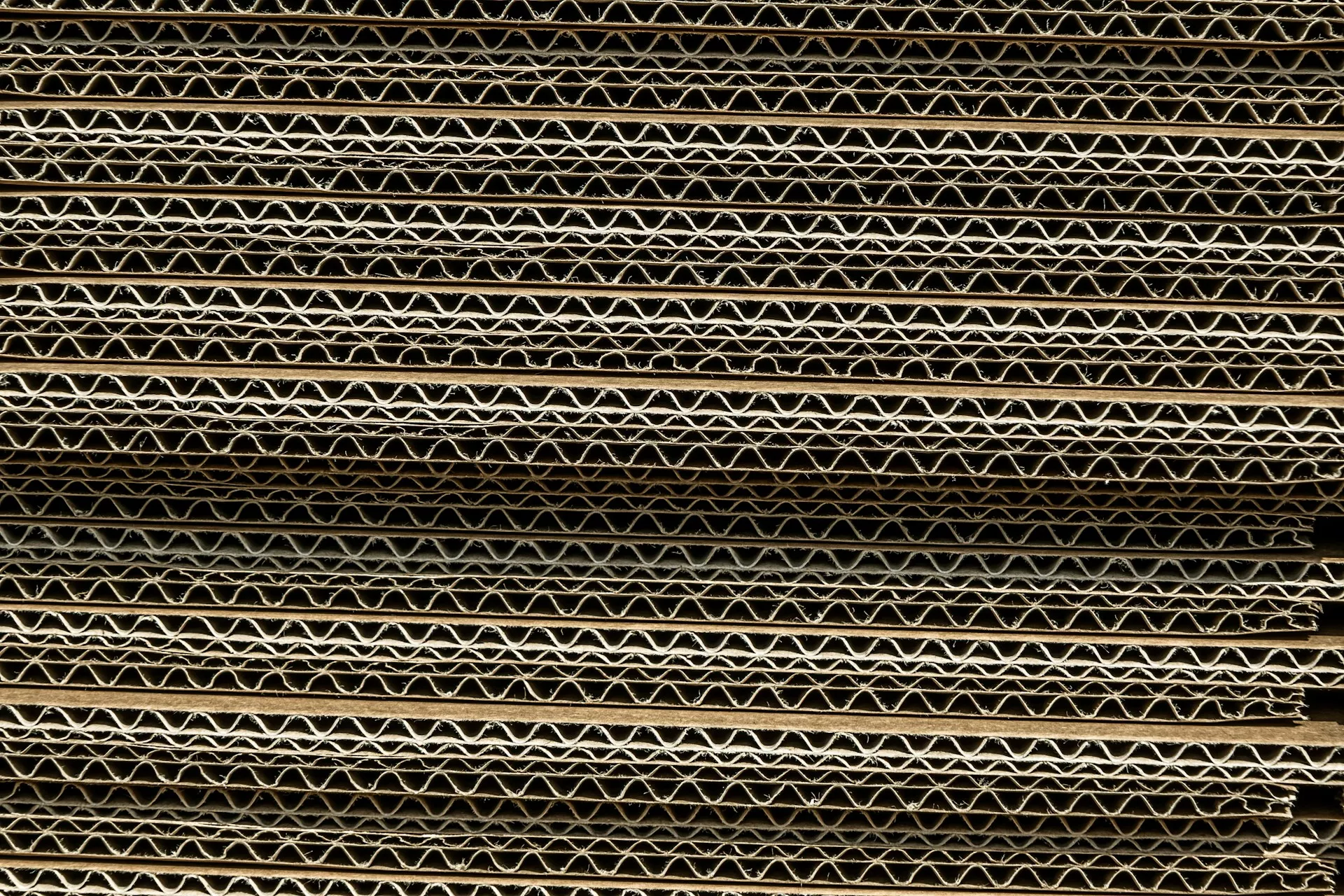
Corrugated boxes are a robust packaging solution with a layered structure. They include a fluted inner sheet between two sturdy outer sheets. Known for their strength, they provide durable protection for goods during shipping and storage. Many industries, from electronics to perishable items, rely on corrugated boxes for practical and cost-effective packaging.
Advantages and Disadvantages of Corrugated Boxes
Here are the features of folding cartons based on four criteria.
| Structural Integrity | Printing Capabilities | Cost-Effectiveness | Environmental Impact |
| – durability and strength – limited aesthetics for retail presentation | – flexibility in printing options – challenges in detailed graphics, unless using a more expensive litho top sheet (typically seen with TV boxes or diapers) | – economical for shipping and storage – Micro-flute corrugate is a cost-effective alternative to rigid setup boxes – considerations for customization costs | – recycling and reusability – use of recycled materials (i.e. fluted cardboard) |
Structural integrity
One of the main benefits of corrugated packaging is its inherent structural integrity, offering a durable and robust packaging solution for goods during shipping and storage. While their strength is significant, the limited aesthetic appeal makes them less suitable for retail displays or presentations.
Printing capabilities
Corrugated box packaging offers some flexibility in printing options, allowing for a moderate selection of branding and labeling choices.
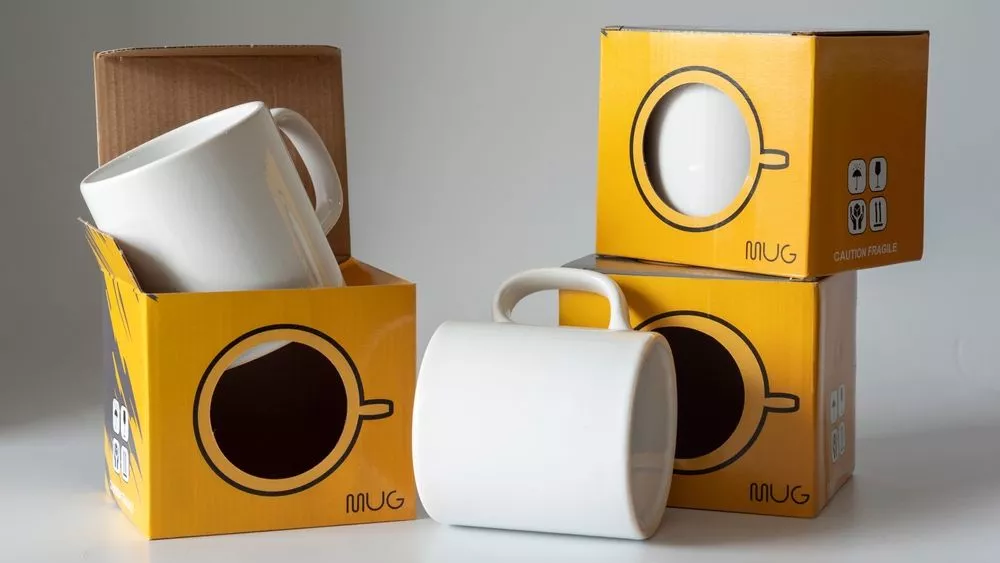
However, it is typically difficult to create corrugated packaging as visually appealing as folding cartons or rigid boxes. When accomplished, the production of these glamorous corrugated boxes is almost always time-consuming or expensive. Some of the costs involved can be recouped through lower per-unit production costs on high-volume products.
Challenges arise in achieving detailed graphics unless the business employs a more expensive separately printed litho top sheet. One can often see this option in the packaging for items like TVs or diapers, where intricate designs demand higher printing precision.
Businesses can partially overcome this limitation by using pressure-sensitive labels to contain high-quality print designs.
Cost-effectiveness
These sturdy boxes shine in cost-effectiveness, particularly for shipping and storage purposes. Their economical nature, and the option of using micro-flute corrugate instead of rigid setup boxes, make them an attractive choice for those looking to optimize packaging costs.
However, customization can incur additional expenses, meaning businesses must weigh the benefits against the associated costs to determine if this packaging type is practical.
Environmental impact
In terms of environmental impact, corrugated boxes are notable for their recyclability and reusability. Using recycled materials, such as fluted cardboard, contributes to sustainable packaging efforts. Corrugated boxes offer businesses a packaging solution that meets environmental standards without sacrificing strength and durability.
What are Rigid Boxes?
Rigid boxes are sturdy and high-quality packaging solutions characterized by their solid structure. Designers use materials like paperboard or chipboard layered in fine paper or cloth to add to the premium feel. Luxury items, electronics, and gifts all typically come in rigid boxes to enhance the perceived value of the enclosed products.

Rigid boxes are sturdy and high-quality packaging solutions characterized by their solid structure. Designers use materials like paperboard or chipboard layered in fine paper or cloth to add to the premium feel. Luxury items, electronics, and gifts all typically come in rigid boxes to enhance the perceived value of the enclosed products.
Advantages and Disadvantages of Rigid Boxes
Here are the features of rigid boxes based on four criteria.
| Structural Integrity | Printing Capabilities | Cost-Effectiveness | Environmental Impact |
| – sturdy and luxurious presentation – limited flexibility for certain products | – high-end finishing options – higher costs for elaborate printing | – premium packaging with higher costs – considerations for brand perception | – challenges in recycling – use of different materials (e.g. hardboard, chipboard) |
Structural integrity
Rigid boxes are synonymous with structural integrity, providing a sturdy and luxurious presentation that adds value to enclosed products. These boxes maintain shape, ensuring optimal protection for delicate or valuable items during transit and storage.
While their robust design is ideal for creating a sense of exclusivity, the limited flexibility of rigid boxes may be a drawback for certain products that require more adaptable packaging.
Printing capabilities
Rigid boxes offer exceptional printing capabilities with high-end finishing options to elevate the visual appeal of the packaging. The solid surface provides an excellent canvas for intricate designs, embossing, and other embellishments. However, the extensive printing capabilities come with higher costs, particularly for elaborate designs.
Cost-effectiveness
While rigid boxes provide a premium packaging solution, they almost always come with considerably higher costs and lead times than alternatives. The luxurious presentation and structural integrity contribute to an elevated perception of the enclosed products, impacting brand image positively.
Businesses should consider the trade-off between the premium packaging costs and the potential enhancement of brand perception.
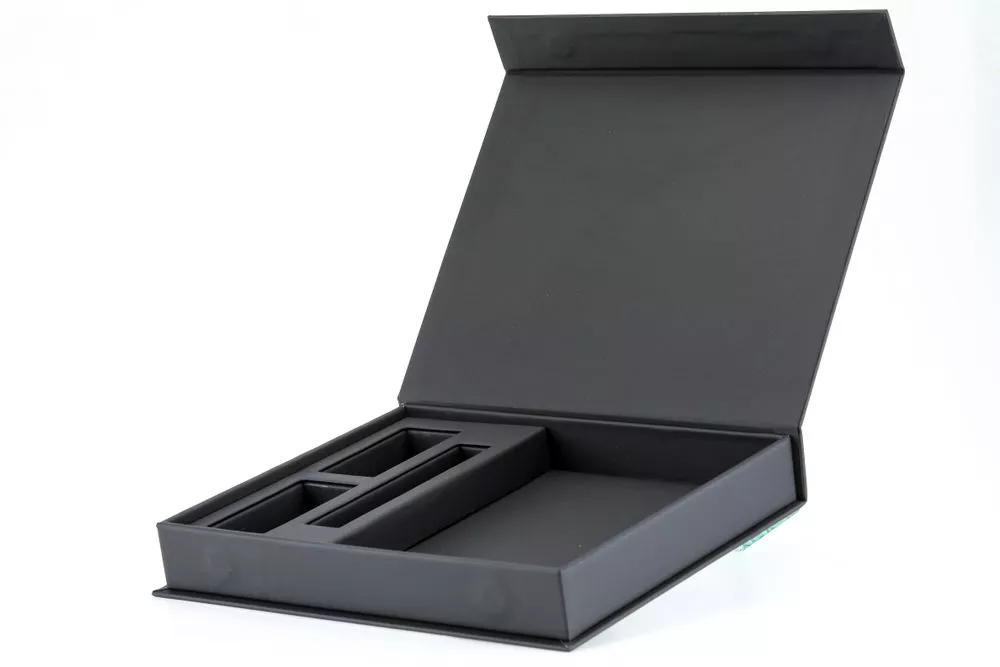
Environmental impact
Rigid boxes pose challenges in recycling due to their layered and often laminated construction. The use of different materials like hardboard (high-density fiberboard) or chipboard contributes to the complexity of recycling processes and makes them more difficult to repurpose after disposal. Rigid boxes may necessitate additional considerations for eco-friendly alternatives.
Furthermore, rigid boxes can often take a fair amount of manual labor, which also contributes to their higher costs. When shipped on a plane from areas where labor costs are lower, it can negatively impact sustainability. When shipped slowly on a boat to reduce costs and environmental impact, it can negatively impact supply chain logistics.
Summary: Folding Cartons vs. Corrugated Boxes vs. Rigid Boxes
Here’s a summary of the pros and cons of each packaging type.
| Folding Carton | PROS | Lightweight and versatile High-quality printing capabilities Shorter lead times Economical for large production runs Recyclable and sustainable |
| CONS | Limited structural integrity for heavy or bulky items Constraints on special finishes Considerations for small batches | |
| Corrugated Box | PROS | Durable and strong Flexible printing options Cost-effective Economical for shipping and storage Recyclable and reusable |
| CONS | Limited aesthetics for retail presentation Challenges in detailed graphics Considerations for customization costs | |
| Rigid Box | PROS | Sturdy and luxurious presentation High-end finishing options Premium packaging appeal Considerations for brand perception |
| CONS | Limited flexibility for certain products Higher costs for elaborate printing Longer lead times Challenges in recycling and repurposing |
The Fine Art of Containment
Understanding the fine art of containment is paramount. From the versatile folding carton to the robust corrugated box and the luxurious rigid box, each can play a pivotal role in shaping a brand’s identity. Structural integrity, printing capabilities, cost-effectiveness, and environmental impact are the central considerations used to decide.
As your business chooses an option from this packaging panorama, consult experts at Meyers to bring your vision to life. Discover tailored solutions through decades of professional printing expertise. Connect with Meyers today for our custom packaging solutions.

